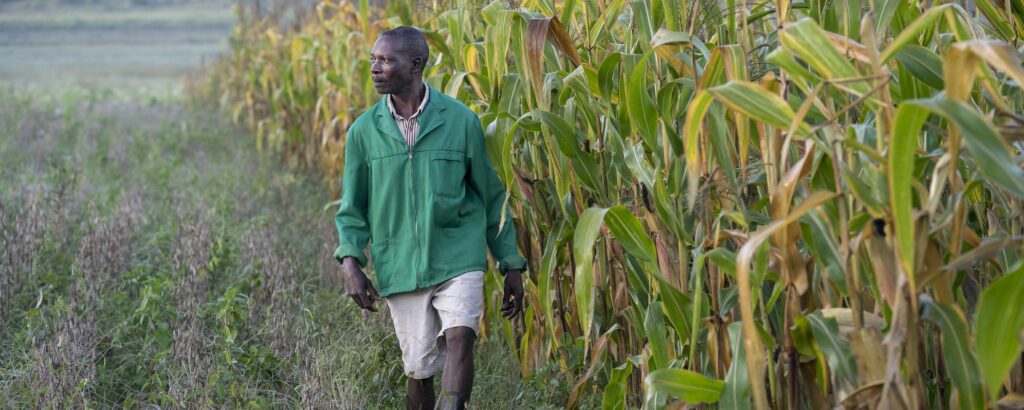Food & Climate
The food and agriculture industry requires 12 times more finance than current levels to reduce its environmental impact in line with global climate goals, a new analysis suggests, according to a report seen by “Food & Climate” platform.
While agriculture accounts for a third of all greenhouse gas emissions, the sector receives merely 7% of global climate funding, highlighting the need for public and private investors to prioritise this industry.
Flows to agrifood systems increased by 332% between 2019/20 and 2020/21, when total funding reached $95B. While that may seem like a positive improvement, it only builds on a low base, and the growth is concentrated in upper-middle- and high-income economies, according to the report by the ClimateShot Investor Coalition (CLIC).
This sum is well short of the $1.1T the food system needs annually by 2030 to lower food and agriculture industry emissions and impact on deforestation and biodiversity loss, and adapt to environmental shifts that impact food security, production, and supply chains. At the current rate, investments in the sector would need to be ramped up 12-fold.
Food and agriculture industry challenge
“The challenge is not just to mobilise multiples of investment in food and agriculture systems, but to channel it effectively to build the system’s ability to withstand climate shocks,” said Dharshan Wignarajah, EU and UK director of the Climate Policy Initiative, which acts as the secretariat for CLIC.
Finance for climate mitigation projects retained the largest share of total flows to the food industry, reaching $45B (or 47%). Still, the industry only received 4% of total mitigation finance across all sectors, an increase from 2% the year before. This is 10 times less than what the energy systems receive, and seven times less than the transport sector.
The majority of the mitigation funds went to energy-related projects like agrivoltaics and bioenergy for crop and livestock systems, followed by fisheries and aquaculture, and forestry. “Land-based activities, such as soil carbon sequestration and sustainable livestock management, remain underfunded despite their high mitigation potential,” the report suggested.

Food and diets remained the least-funded sector, attracting only $400M (0.5% of total mitigation funding). Despite this being a threefold increase on the year before, it still fell drastically short of the $52B required annually. According to the authors, this stream needs a 100-fold increase in finance.
“Funded projects primarily support healthy low-carbon diets – such as diversified protein sources and plant-based options – as well as reducing food loss and waste and strengthening local food systems,” they wrote in their analysis of the food and diets segment.
It was mostly focused on developed markets
Financing for food remained heavily skewed towards R&D and awareness-building, and mostly came in the form of grants. Geographically, it was mostly focused on developed markets, with Europe and North America responsible for two-thirds of this share. Emerging markets like Southeast Asia and sub-Saharan Africa were overlooked, despite high levels of food loss at the farm level.
“Finance for critical demand-side measures – such as shifting dietary patterns – remains severely
limited, rising only slightly from $0.1B to $0.4B between 2019/20 and 2021/22,” the report said.
“Still, the alternative protein sector continues to draw interest from institutional investors seeking ESG-aligned opportunities and protection against animal welfare and supply chain risks.”
Adaptation finance for agrifood systems reached $13B, growing in absolute terms but declining as a relative share of total climate funding (1%). More than half of this went to crop and livestock systems and biodiversity, land, and marine ecosystems, and private investment was negligible here.

Sub-Saharan Africa accounted for the largest share of adaptation finance (23%), a reflection of investors’ priorities and the region’s climate vulnerability and reliance on agrifood livelihoods while other vulnerable regions, like Latin America and South Asia, received “significantly lower funding”.
The overall rise in agrifood finance from 3.6% to 7.2% was largely driven by the EU and China, which collectively accounted for 90% of domestic flows to this sector. This was largely thanks to the reforms under China’s 14th five-year agricultural plan, and fiscal incentives under Western Europe’s Green Deal and Covid-19 recovery strategy.
Public sector finance made up 78% of agrifood investment in 2020/21, with the share of domestic sources increasing from 47% to 73%, according to “green queen”.
Related Topics:
6 of EU’s food imports are increasingly threatened by climate change, a new study says
Carbon tax will be very small initially in 2026, European official to “Food & Climate”

